
Since the time Kempe Gowda-I, a chieftain under the Vijayanagara Empire built Bengaluru in 1537, the city with its salubrious climate, greenery, and kind-hearted people has been steadily growing, attracting people and organizations from across the country and even abroad.
For the devotees and admirers of the Ramakrishna Order, there are two significant events in the history of Bengaluru: the first is Swami Vivekananda’s visit in 1892 and later Holy Mother Sri Sarada Devi’s visit in 1911. These two visits, along with the visits of other direct-disciples of Sri Ramakrishna – Swamis Brahmananda, Ramakrishnananda, Abhedananda, Shivananda, and Vijnanananda, made Bengaluru an important center for spreading Ramakrishna-Vivekananda movement across Karnataka. One of the great maxims of Swamiji: “They alone live who live for others, the rest are more dead than alive” was written to Chamaraja Wadiyar, the Maharaja of Mysore. For more than a century, the people of Bengaluru have been paying tributes in various ways to Swami Vivekananda, the patriot-monk. Last January, a unique tribute was offered in the form of the Republic Day Flower Show, 2020 at Lalbagh. It was called Viveka Pushpa Namana or ‘Floral Respect to Vivekananda’ and held from 17th to 26th January 2020.
Diese Geschichte stammt aus der March 2020-Ausgabe von The Vedanta Kesari.
Starten Sie Ihre 7-tägige kostenlose Testversion von Magzter GOLD, um auf Tausende kuratierte Premium-Storys sowie über 8.000 Zeitschriften und Zeitungen zuzugreifen.
Bereits Abonnent ? Anmelden
Diese Geschichte stammt aus der March 2020-Ausgabe von The Vedanta Kesari.
Starten Sie Ihre 7-tägige kostenlose Testversion von Magzter GOLD, um auf Tausende kuratierte Premium-Storys sowie über 8.000 Zeitschriften und Zeitungen zuzugreifen.
Bereits Abonnent? Anmelden
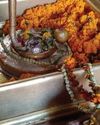
Panchakroshi Parikrama of Varanasi
At the snow-capped Kailas, the Divine Lord Shiva was seated with Mother Parvati.
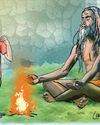
Gadai and the Monks
A fictional narrative based on incidents from the childhood of Sri Ramakrishna.
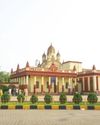
Chintayo momo maanosho Hori...
Sri Ramakrishna loved songs. There probably was no normal day when he did not sing some songs.
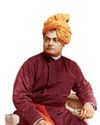
The Vedanta Vaccine
The world is still struggling under the impact of the pandemic due to Covid-19 for the last three years.

Chandrakirti's Chariot: Self in Madhyamaka Buddhism and Advaita Vedanta
The goal in Advaita Vedanta is the cessation of suffering and the attainment of true fulfillment. Suffering, according to this school, is due to ignorance of the true nature of the self and consequent erroneous identification with the body-mind.
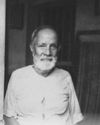
Reminiscences of Sargachhi
Question: यद्यदाचरतत श्रेष्ठसतत्तदरेवरेतरो जनिः। ‘Whatever a superior person does, others do the same thing!’ (Gita 3:21) – What does this statement mean?
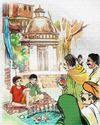
THE AUTUMN FESTIVAL
A fictional narrative based on incidents from the childhood of Sri Ramakrishna.

Bards of Guruvayur: Vilwamangalam II
Saints of India
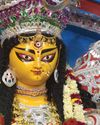
In the Universal Mother’s Divine Playground
Swami Vivekananda never taught the worship of Mother Kali. In a letter to Mary Hale he writes, “Kali worship is not a necessary step in any religion.
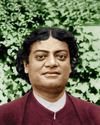
Swami Vivekananda: A Sportsman Par Excellence
In various books and articles, Swami Vivekananda has been called a spiritual leader, a prophet, a patriot, a social reformer, a philosopher, a yogi, a writer, an orator, an educationist, a musician, and so on.